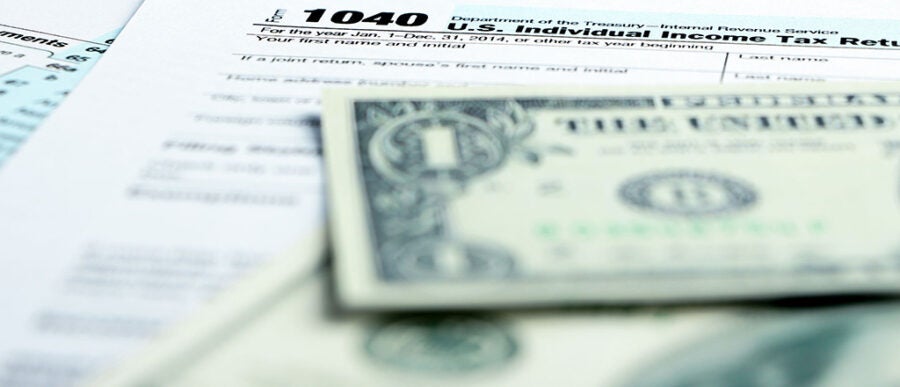Last November, Alexandria Ocasio-Cortez, a 29-year-old with working-class roots, made waves by being the youngest woman to be elected to Congress. In a January 4 interview with Anderson Cooper on CBS’ 60 Minutes program, she made news again by floating the idea of raising the top marginal tax rate to as high as 70% on income over $10 million. “People are going to have to start paying their fair share in taxes,” she said. “As you climb up this [income] ladder, you should be contributing more.”
Predictably, battle lines quickly were drawn between proponents and opponents of tax increases. University of California, Berkeley economics professors Emmanuel Saez and Gabriel Zucman wrote in a New York Times op-ed that the rich “can contribute more to the public coffers. And given the revenue needs of the country, it is necessary.” An opinion piece by the editorial board of The Wall Street Journal criticized a 2011 analysis by Saez and economist Peter Diamond, saying both men “admit that taxes can have detrimental long-term effects on growth. Yet they ignore the long-term effects of marginal tax rates on growth.”
At present, the top marginal federal tax rate is 37%. It is not the same as an average tax rate, which is the actual amount of taxes paid. According to the Tax Policy Center, if a taxpayer earning $100,000 pays $15,000 in taxes, the average tax rate is 15%. The marginal tax rate is the tax paid on incremental income — it would be different rates for different slices of income. The first few bucks would be taxed at a different rate than the next rung up, and on so. Ocasio-Cortez’s proposal would tax amounts in excess of $10 million at 70%. Below $10 million, the rate is lower. However, the federal rate is in addition to state and local taxes.
A Nonpartisan View
The Penn Wharton Budget Model, a nonpartisan, research-based economic analysis tool from the University of Pennsylvania, also waded into the debate to try to get to the unvarnished truth. It performed a detailed, though not exhaustive, analysis of the proposal since Ocasio-Cortez didn’t provide many details of her plan. The model assumed that high-income owners of ‘pass through’ businesses — where company profits flow to the owners — would reorganize as ‘C’ corporations to lower their taxes, since the corporate tax rate is a much smaller 21%.
“I think the main objective here is to basically make a statement about the desire to take some of the income away from people who are doing extremely well.” –Alan Auerbach
The Penn Wharton Budget Model’s conclusion: These tax avoidance activities “could cause the new 70% tax rate to raise only 43% of the revenue that would otherwise be raised.” The model projected that a 70% marginal tax rate on income above $10 million would straight up raise $382 billion between 2020 and 2029. If one includes changes in taxpayer behaviors, the estimate drops to $353 billion. Allowing for business income shifting with full payout, the projected revenue would fall even more, to $248 billion. If this income is deferred indefinitely, then revenue plunges to $164 billion — or 43% of the original $382 billion.
According to the Tax Policy Center, the U.S. has seen margin tax rates of as high as 94%, in 1944 and 1945. The top rate began declining in earnest in 1964, which was in the 70-plus percent level, down to 50% in the first half of the 1980s, falling further to 35% in the early 2000s to 37% today, after last year’s tax cuts.
Past Experience
On the surface, the 70% marginal rate is likely to have difficulty achieving its revenue objective. For one, only a relatively small number of taxpayers even earn incomes of more than $10 million a year, according to Richard Prisinzano, senior economist with the Penn Wharton Budget Model, who previously worked at the U.S. Treasury Department’s Office of Tax Analysis. He recently talked about the Ocasio-Cortez marginal tax rate proposal on the Knowledge at Wharton radio show on SiriusXM. (Listen to the podcast at the top of this page.)
If Ocasio-Cortez’s goal was to raise a lot more tax revenue, then rate increases should start at incomes “a lot lower than $10 million,” said Alan Auerbach, director of the Robert D. Burch Center for Tax Policy and Public Finance at the University of California, Berkeley, who also spoke on the radio show. He noted that back in the 1960s, the top marginal tax rate was above 90%. However, the high rate was applied to “people with incomes starting in the few million dollars,” Auerbach said. “I think the main objective here is to basically make a statement about the desire to take some of the income away from people who are doing extremely well. I think there’s a sense that somehow, they are not entitled to it.”
But over time, there was a realization that high rates generally were less productive because not only did they affect just a small group of people but they also encouraged tax avoidance activities, Auerbach said. “It didn’t necessarily raise a lot of revenue.” Especially when people add in state income tax rates — which would be high for New York and California — the top marginal tax rate could reach the 80-plus percent level, he said. “For tax rates like that, I think the amount of tax avoidance … would make it sort of counter-productive from a traditional standpoint of simply trying to balance revenue needs with economic distortions.”
“If you’re looking for pure revenue, this might not be the right way to do it.” –Richard Prisinzano
Closing Loopholes
Prisinzano said that in the past, when the top marginal tax rate was high, many people used corporations as tax shelters. Ocasio-Cortez’s proposal, which would nearly double the current top rate for the wealthy, could have the same effect. “People with $10 million of income tend to have a lot of business income, a large portion of which comes through ‘pass-through,’” he said. “It would be pretty easy to move that over to corporations, and that would facilitate this hiding. … If you’re looking for pure revenue, this might not be the right way to do it.”
Auerbach acknowledged that the government has closed “some of the most egregious tax avoidance opportunities.” For example, in the past, partnership losses were reported to the IRS by wealthy people who “weren’t really engaged in businesses but were just using partnerships as tax shelters.” The Tax Reform Act of 1986 closed that loophole. “But that was more or less getting rid of fake businesses,” he said. “If you have real businesses, it’s a lot harder to circumscribe the avoidance activities.”



